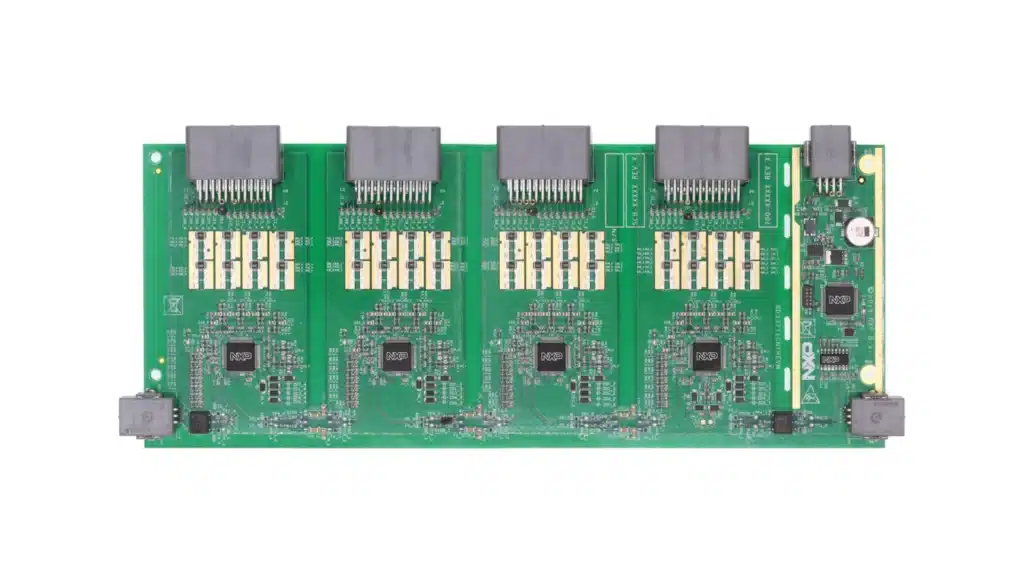The BMS reference design heralds a new era of efficient battery management for modern EVs, ensuring unparalleled safety and peak performance.

The Battery Management System (BMS) plays a pivotal role in the modern, electrified world, ensuring that battery-operated systems, from smartphones and laptops to electric vehicles (EVs) and large-scale energy storage systems, operate efficiently and safely. As a guardian of battery health, a BMS monitors individual cell voltages, regulates charging and discharging processes, and ensures thermal stability. Given the ubiquity of battery-operated devices in our daily lives and the potential risks associated with their misuse, the BMS stands as an unsung hero, safeguarding our devices, extending their lifespans, and, by extension, enhancing the reliability and safety of countless daily applications.
The RD33771CNTREVM is a flexible BMS reference design launched by NXP Semiconductors. The design is tailored for both centralized and distributed BMS in EVs. The design prominently features 4 Battery Cell Controllers (BCCs) on one board, all overseen by a single Scalable 32-bit Arm Cortex-M-based Microcontroller Unit (S32K1xx MCU). It offers communication options through either transformer or capacitor isolation. Furthermore, multiple boards can be interconnected using the Third Port Link (TPL) twisted wire daisy chain. This configuration facilitates smooth integration with other battery management units, broadening the application spectrum for diverse automotive battery management situations.
The boards accommodate a variety of analogue, mixed-signal, and power functionalities. They integrate comprehensive integrated circuits and system-in-package technologies, leveraging reliable, high-volume methodologies. NXP offerings enhance battery longevity, present a more compact design, minimize component numbers, reduce costs, and amplify performance in driving cutting-edge systems. The versatility of the reference design caters to both 48V and 14V BMS applications, setting the stage for a broad spectrum of uses in the electrified automotive landscape.
The reference design boasts an array of advanced features tailored for optimal performance. It utilizes the S32K144 microcontroller, which adheres to the ASIL-B safety standard, to manage all Analog Front Ends (AFEs) on the board. Additionally, a strategic transformer/capacitor isolation is implemented between each BCC. Each AFE can perform 14 battery cell voltage measurements and simultaneously manage seven temperature channel measurements. To further its adaptability, the design allows for a daisy chain link to interconnect with other boards, promoting a flexible architectural approach. In the realm of power management, the board integrates a power supply equipped with watchdog support and is proficient in detecting both overvoltage and Undervoltage scenarios. To round off its robust feature set, the board offers a CAN interface and uses a capacitor/transformer isolation-based TPL daisy chain for off-board connectivity.
NXP has tested this reference design. It comes with a Bill of Materials (BOM), schematics, etc. You can find additional data about the reference design on the company’s website. To read more about this reference design, click here.






